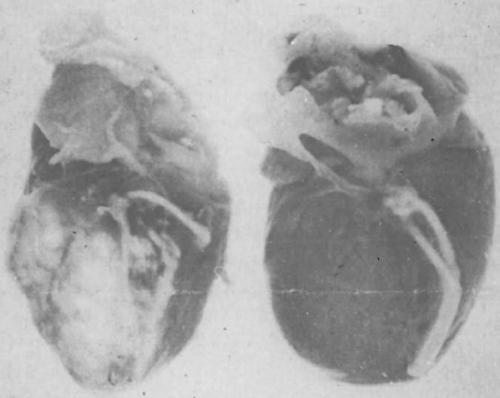Indirect Effects of Glucose Availability
Besides delivering more glucose to the tumor tissue, hyperglycemia has two other important negative effects for the host: First, as pointed out by Ely and Krone, even modest blood glucose elevations as they typically occur after a Western diet meal competitively impair the transport of ascorbic acid into immune cells.[88,91] Ascorbic acid is needed for effective phagocytosis and mitosis, so that the immune response to malignant cells is diminished. Second, it has been shown in vitro and in vivo that hyperglycemia activates monocytes and macrophages to produce inflammatory cytokines that play an important role also for the progression of cancer[92–94] (see below). Third, high plasma glucose concentrations elevate the levels of circulating insulin and free IGF1, two potent anti-apoptotic and growth factors for most cancer cells.[60] Free IGF1 is elevated due to a decreased transcription of IGF binding protein (IGFBP)- 1 in the liver mediated by insulin.[95] Due to expression of GLUT2, the β-cells of the pancreas are very sensitive to blood glucose concentration and steeply increase their insulin secretion when the latter exceeds the normal level of ~5 mM. In the typical Western diet consisting of three meals a day (plus the occasional CHO-rich snacks and drinks), this implies that insulin levels are elevated above the fasting baseline over most of the day. Both insulin and IGF1 activate the PI3K/Akt/mTOR/HIF-1α pathway by binding to the IGF1 receptor (IGF1R) and insulin receptor (IR), respectively (Figure 2). In addition, insulin stimulates the release of the pro-inflammatory cytokine interleukin (IL)-6 from human adipocytes.[96] Thus, it could be hypothesized that a diet which repeatedly elevates blood glucose levels due to a high GL provides additional growth stimuli for neoplastic cells. In this respect, Venkateswaran et al. have shown in a xenograft model of human prostate cancer that a diet high in CHO stimulated the expression of IRs and phosphorylation of Akt in tumor tissue compared to a low CHO diet.[97] In colorectal,[27] prostate[24] and early stage breast cancer patients[23,98] high insulin and low IGFBP-1 levels have been associated with poor prognosis. These findings again underline the importance of controlling blood sugar and hence insulin levels in cancer patients. Dietary restriction and/or a reduced CHO intake are straightforward strategies to achieve this goal.
Altered Nutritional Needs of Cancer Patients
Cancer patients and those with metabolic syndrome share common pathological abnormalities. Since 1885, when Ernst Freund described signs of hyperglycemia in 70 out of 70 cancer patients,[99] it has been repeatedly reported that glucose tolerance and insulin sensitivity are diminished in cancer patients even before signs of cachexia (weight loss) become evident.[100–102] Both diabetes and cancer are characterized by a common pathophysiological state of chronic inflammatory signalling and associated insulin resistance. In cancer patients, insulin resistance is thought to be mediated by an acute phase response that is triggered by pro-inflammatory cytokines such as tumor necrosis factor (TNF)-?.[101] and IL-6[103] In animal and human studies, removal of the tumor resulted in improved glucose clearance, suggesting that these cytokines are secreted, at least in part, from the tumor tissue itself.[104,105] The impact on the metabolism of the host is illustrated in Figure 3. In the liver, the inflammatory process leads to increased gluconeogenesis that is fuelled by lactate secreted from the tumor as well as glycerol from fatty acid breakdown and the amino acid alanine[106] from muscle proteolysis. Gluconeogenesis is an energy-consuming process and might contribute to cancer cachexia by increasing total energy expenditure. Despite increased lipolysis, hepatic production of ketone bodies is usually not enhanced in cancer patients.[107,108] This is in contrast to starvation, where the ketone bodies acetoacetate and β-hydroxybutyrate counteract proteolysis by providing energy for the brain and muscles.[109] In muscle, glucose uptake and glycogen synthesis are inhibited already at early stages of tumor progression, while fatty acid oxidation remains at normal levels or is increased.[110,111] In the latter case, more fat has to be provided from lipolysis in the adipose tissue. In addition, muscles progressively lose protein to provide amino acids for hepatic synthesis of acute-phase proteins and as precursors for gluconeogenesis. Thus, insulin resistance contributes to fat loss and muscle wasting, the two hallmarks of cancer cachexia. At the same time, it makes more glucose in the blood available for tumor cells.
That insulin resistance is probably produces by the elevated FFA caused by the tumor thriving on fat. Instead of removing the tumor, inhibiting lipolysis and/or fat oxidation would have had the same effect as the study on leukemia found with the (toxic) drug etomoxir.

